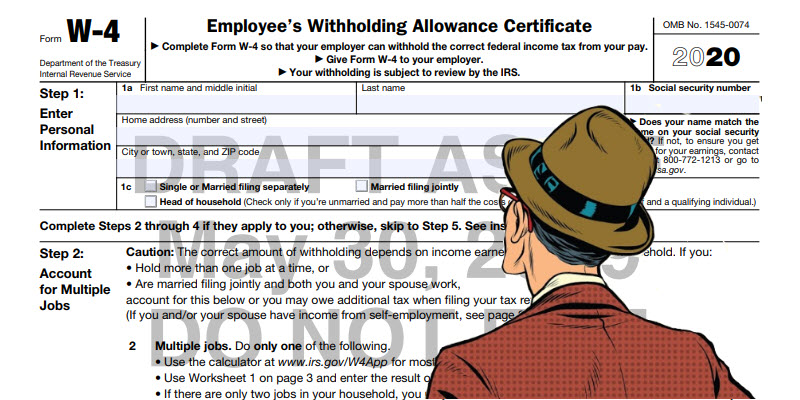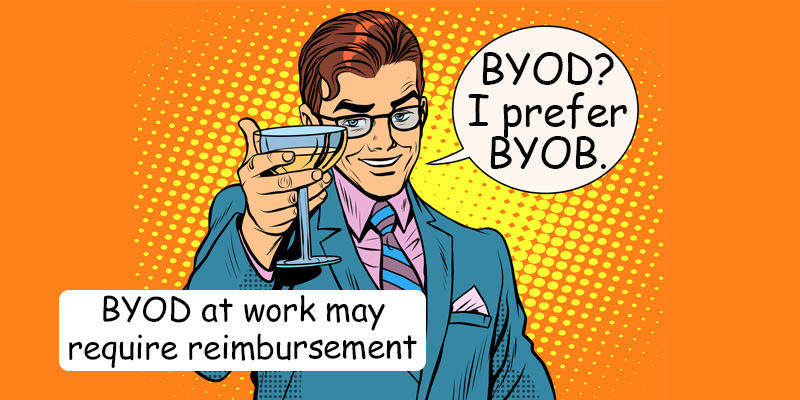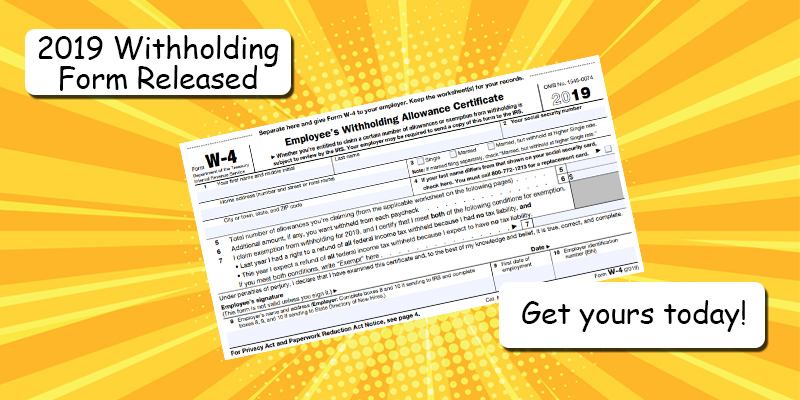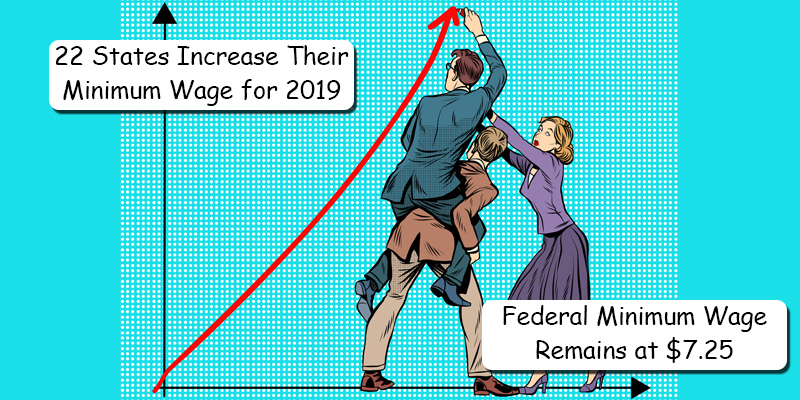I had written a previous blog “Going Paperless” regarding paperless payroll as it pertains to the check stub, but I suppose I may have put the cart before the horse. You cannot really have a paperless payroll unless you get rid of the paycheck. Of course you have employees with direct deposit, but what about the unbanked, or those who may just prefer to get a check, rather than all of the conveniences of direct deposit? Are there ways to mandate direct deposit to become paperless? Yes, there are 25 states where the laws or enforcement positions can be interpreted…
The W-4 form has remained basically unchanged for many decades. For a flashback, here is what it looked like in 1990: https://www.irs.gov/pub/irs-prior/fw4–1990.pdf. Unchanged until now, that is. The IRS has done a complete revamp of the form for 2020 by adding many additional fields for the employee to complete as well as removing ‘number of allowances.’ You may ask how that can be since the number of allowances basically dictated the amount of federal income tax withheld from a paycheck. You need to see the new form to believe it, and here it is: https://www.irs.gov/pub/irs-dft/fw4–dft.pdf. The form asks the employee…
Ever since the 2015 Obergefell v. Hodges case in which the Supreme Court of the United States ruled that the fundamental right to marry is guaranteed to same-sex couples by both the Due Process Clause and the Equal Protection Clause of the Fourteenth Amendment to the United States Constitution, it has been shown that the number of employers offering domestic partner benefits has significantly decreased. A year before the ruling (2014), a survey reflected that 59% provided benefits to same-sex domestic partners and just one year later (2016), 48% are providing benefits with that number decreasing each year. The reason…
According to a 2017 study by CareerBuilder, they determined that 78% of US workers live paycheck-to-paycheck and 75% of workers were in debt. With those statistics, many employers find it common to be approached by an employee for a loan or advance. While it may be seen as a way to improve employee morale, productivity, and employee loyalty, there are many other factors to take into consideration to avoid a detrimental impact. In this article, I will cover some of the little known aspects of employee loans and advances. First off is whether or not the loan is going to…
If you have an employee who drives their personal vehicle for a work related matter, it is the norm to reimburse the employee for the business-related use. It is a straight forward calculation by taking into consideration how many miles the person drove and multiplying it by a rate. The IRS even publishes a standard mileage rate of .58 cents per mile (2019). But what if that employee uses their mobile personal device (aka cell phone) in a Bring Your Own Device (BYOD) workplace? As employers implement paperless, streamlined, and automated solutions to their work environment, we are finding that…
The time is here. As a followup to my July 26th, 2018 article, the Social Security Administration has started mailing those Employer Correction Request Notices (EDCOR) to employers who submitted their 2018 W-2 form containing employees names and Social Security Numbers that did not match the SSA’s records. A sample of the notice is provided here. Since this notice is being sent to an employer with just one error, this will affect a large amount of businesses that it may take them several months to send out all of the notices. If you do not see one right away, it…
Late last year, the Internet Crime Complaint Center (IC3), a division of the FBI released a public service announcement I-091818-PSA https://www.ic3.gov/media/2018/180918.aspx regarding the practice of payroll diversion by cyber-criminals. This announcement identified employees whose online self-service portal credentials were compromised, typically through a phishing attempt, and the criminal would change the direct deposit bank account of the employee to a loadable debit card in their possession. Unfortunately, once funds are sent to a debit card, the criminal can withdraw them without a trace. I am expanding that announcement to include another case of payroll diversion that we have seen. While…
Over the next few weeks, as your employees start to receive their 2018 W-2 form, they will most likely have questions as to what all those numbers mean. For example, it is not uncommon for a salaried employee who earns $50,000 per year question why their Box 1 Wages only reflects $45,000. The response is, ‘do you contribute to a pension plan or have pre-tax insurance, then if so those amounts reduce your “taxable” wage, which is what appears in Box 1’. To assist you with those questions, here is an explanation of what is in each box and what…
Whew! We dodged a bullet… at least for another year. If you are not familiar with what the 2019 W-4 form could have looked like, then keep an eye out for a future article where we will give it a thorough review as it is now postponed for 2020 by the U.S. Treasury. The new 2019 W-4 form has been published (including the Spanish W-4(SP) version) and not much is changed from the 2018 version. A Form W-4 remains in effect until the employee gives you a new one, so you do not need to obtain a new form each year. When…
While the Federal minimum wage remains at $7.25 per hour, 22 states and many cities/locals have set increases effective January 1st, 2018 with a few announcing a July 1st, 2019 increase, and New York with a December 31st, 2018 increase. A list of each state/local, along with the new hourly rate is listed below; All rates are effective January 1st, 2019 unless otherwise noted. Alaska: $9.89 an hour Arizona: $11.00 Flagstaff: $12.00 Arkasnsas: $9.25 California: $12.00 for businesses with 26 or more employees; $11.00 for businesses with 25 or fewer employees Alameda: $13.50 Belmont: $13.50 Cupertino: $15.00 El Cerrito: $15.00 Los Altos: $15.00 Los Angeles: (7/1/2019) $14.25 for businesses with 26 or more employees;…










